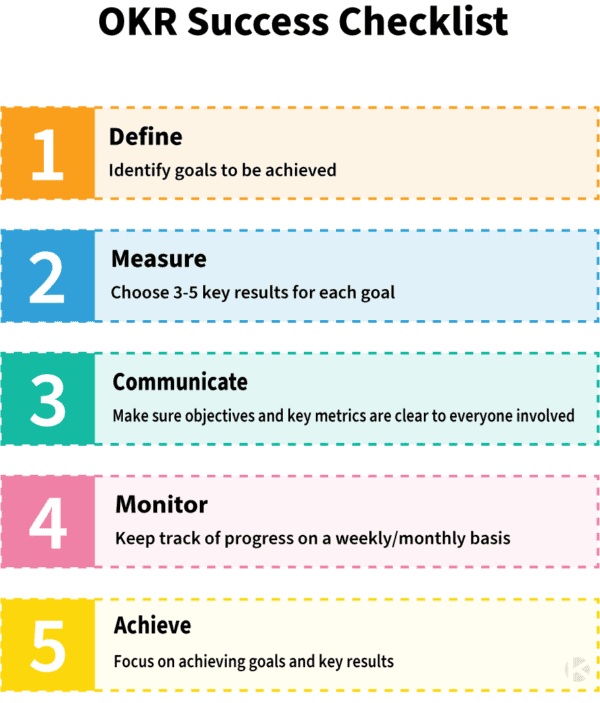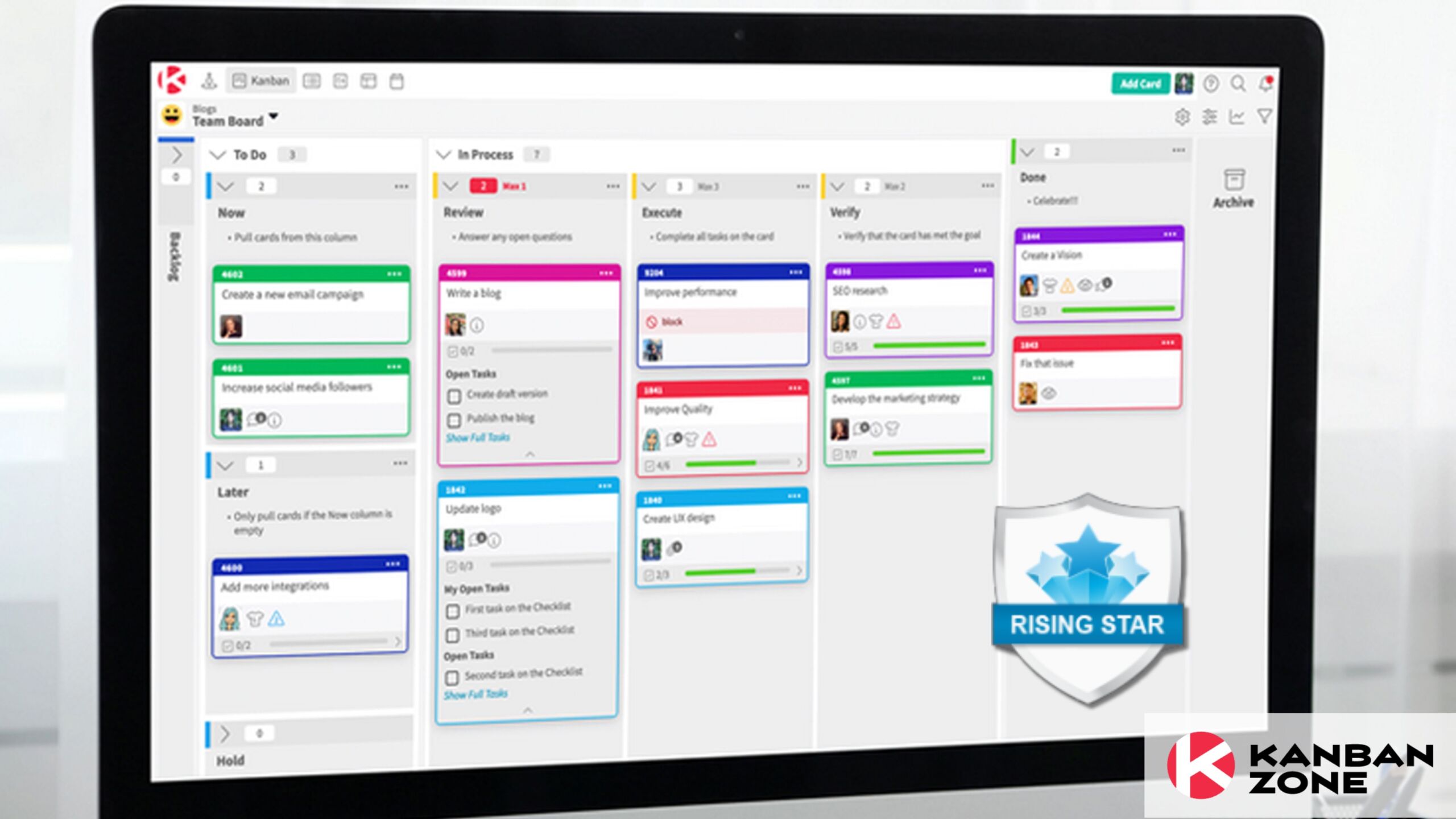
How do you measure your team’s success?
Every organization across all industries is in a constant pursuit of success. All business owners, whether it’s for a small business or a big conglomerate, want nothing more than just to see their fruits of labor after a long day, week, month or year. This is one reason why many organizational leaders make use of a variety of performance indicators to understand how the whole business is fairing. One of the widely used success measurement frameworks in the business world are OKRs or objective and key results. Measuring OKR success allows you to learn more about how your team performs, what problems need to be addressed and strategize better for your team’s success.
What is an OKR?
OKRs or objective and key results refer to a widely used goal management methodology that allows organizations to implement strategies and reach their objectives based on the key results they have established. These can be long-term or short-term goals, with the measurement time frame ranging from a week or up to a year. By deciding to use OKRs, you and your team will need to identify your objectives and create key results that will allow you to determine if the objectives were successfully achieved.
OKRs mainly have 2 parts: the objectives and the key results. Every objective that you choose to work with should both motivate and challenge your team to be better. To help you monitor if your team is achieving your objectives, key results should be identified for each objective.
Examples of Objectives and Their Corresponding Key Results
Objective:
Improve customer satisfaction rate
Key Result:
Higher satisfaction rate
(can be measured through customer ratings and surveys)
Objective:
Reduce number of processing errors
Key Result:
Lower occurrence of errors
(can be based on count or overall error rate)
Objective:
Increase sales revenue
Key Result:
Higher earnings from sales
Setting up Your OKRs
Before you can start measuring your team’s OKR success, you should first work on what your OKRs will be. One of the good things about OKRs is that you and your team can create the right set of objectives and key results that will make your team more effective and successful. To help you set up the right OKRs, here are some of the things to keep in mind. Your OKRs should be:
- Clear. Make your OKRs clear and concise. Creating ambiguous objectives and key results may affect your team’s ability to efficiently measure your success.
- Measurable. See to it that the key results that you specify are trackable and measurable, so they need to be in numerical form (percentage or amount).
- Team-oriented. OKRs should be designed to enable your team to work together, improve and be more productive.
- Reasonable. Go for goals and results that are realistic and attainable.
- Impactful. Your OKRs should help you achieve impactful goals, something that will help your team grow and be better overall.
- Time-bound. They should have a timeframe or deadline
By using these as your guide in setting up your OKRs, you’ll be able to create OKRs that can improve your team productivity and be able to meet your success goals. Once you have setup your OKRs, you will then need to work on accomplishing each of your objectives and achieving your key results. To help you make sure that you are properly implementing your OKR strategy, here is an OKR success checklist to serve as your guide.

Benefits of OKR Success Tracking
Adopting a new success tracking strategy such as OKRs will require a lot of planning and effort, but when done right, it can help you get closer to achieving one or more of your team’s goals. Here are some of the benefits of using OKRs.
Improves your team’s focus
OKRs are designed to help you zero in on your goals. By clearly defining your objectives and identifying what the results you are looking to achieve, it makes it easier for everyone to focus on the same targets. Whether it’s to improve customer retention, come up with more product ideas or to increase earnings, OKRs can make it easier for teams to stay focused on their goals.
Aligns your team goals with the company
Having multiple teams and goals in an organization can sometimes make it more tricky to achieve company-wide objectives. If not handled properly, your micro teams’ efforts can be misdirected and they’ll just work on their individual goals without any specific regard to the company’s goals. By setting up OKRs, you can align your strategy and goals throughout your teams and departments with those of the company. Through proper goal alignment, you can make all of your processes more efficient by setting relevant individual and team goals.
Helps define commitments clearly
Another good thing about using OKRs is that it makes it easier for teams to keep track of who is taking care of specific tasks within the organization. When creating OKRs, you will also need to highlight who is responsible for the completion of each objective. This way, it’s clear who will be handling each objective and everyone will be made aware of each team member’s responsibility in achieving the OKR success.
Makes success tracking more efficient
With the help of OKRs, it will be easier for your team to visualize your success. Regularly tracking your progress in terms of achieving your objectives allows your team to have a clearer picture of how far along you are in meeting your goals. By the end of your timeline, your OKR results will also serve as a guide, allowing you to understand your team’s performance and be able to create a plan to improve.
Challenges your team to go further
Defining clear objectives will help push your team forward. Knowing that you have a goal to pursue can help give your team a clearer purpose and motivate your team to work hard and accomplish your objectives. Once your OKR success is achieved, you can then create a new goal and push your team even further. Continuously challenging your team will also help your organization grow.
Track Your OKR Success Better with Kanban
Keeping track of your OKR success will require a better, more visual approach to performance tracking. This is where Kanban can come in handy. With the help of a virtual Kanban board like Kanban Zone, you can easily create a board to monitor your OKR progress. To do this, check out our OKR board template. Your department heads can then create cards for each objective and create checklists to enumerate specific tasks and initiatives that need to be taken care of. You can use the cards’ description sections to provide more details on how to achieve each objective, then assign each card to the team members involved in achieving each goal.
Moreover, you as the business leader can also create a Kanban board connected to each department board, allowing you to easily monitor each department’s progress in meeting their specific OKR success. With proper planning, implementation and communication, your team can work together in achieving your objectives and key results.
Table Of Contents
Discover many more posts…







